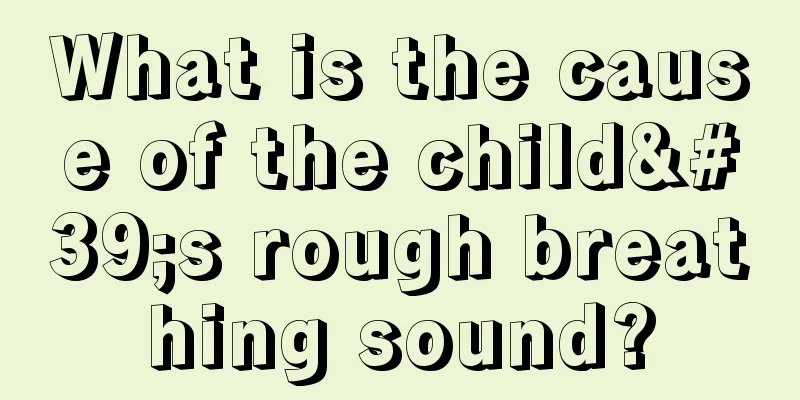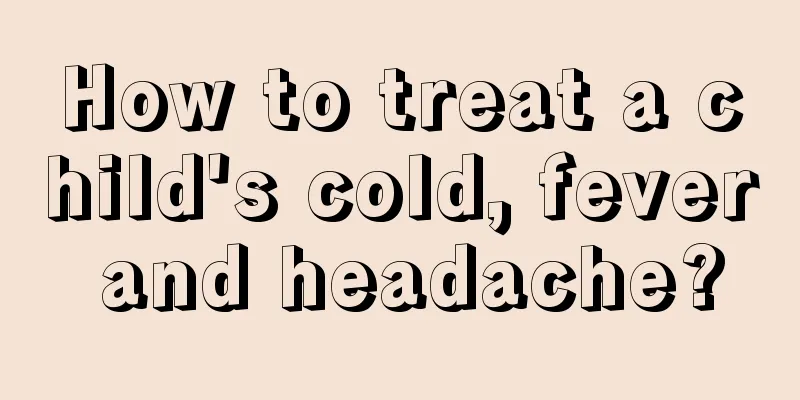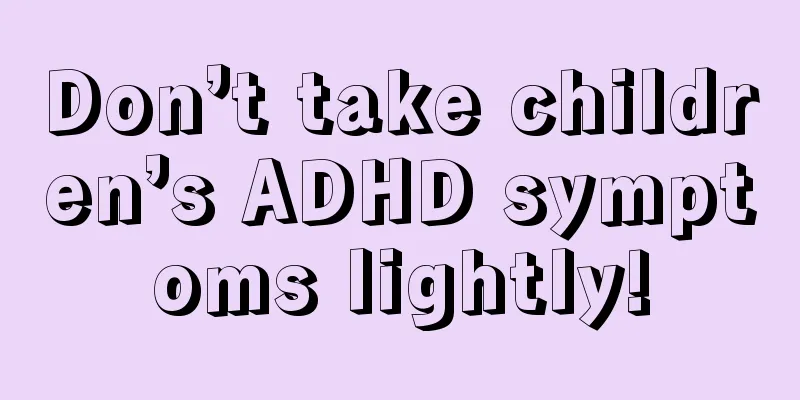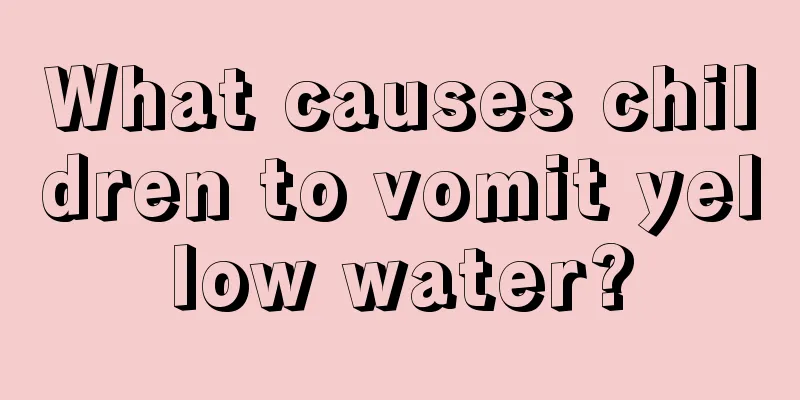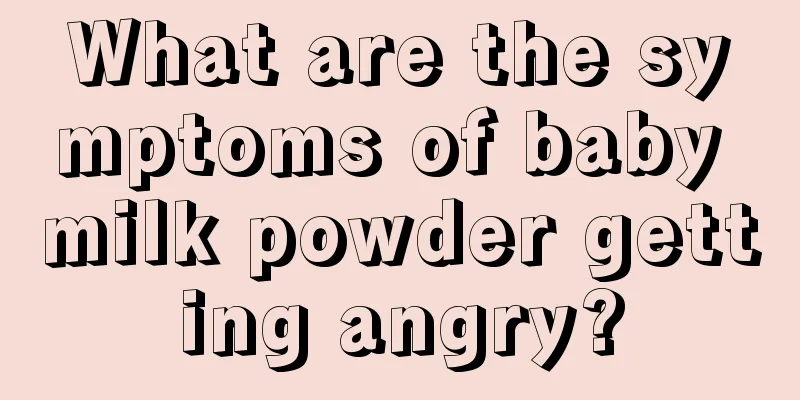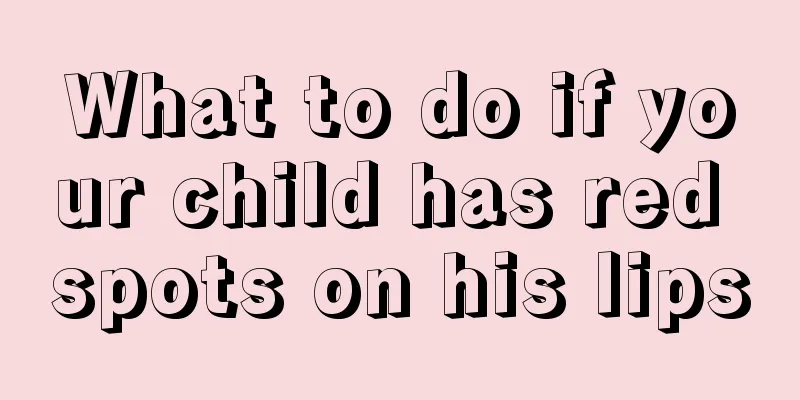Fever care for infants
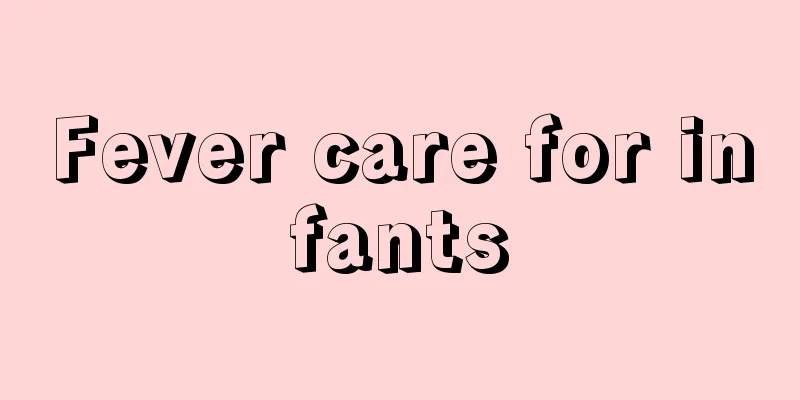
|
What are the care methods for young children's fever? I believe this is an issue that every mother will pay attention to. 9 out of 10 children will have colds and fevers to a greater or lesser extent, and because some children have poor resistance, they even have frequent colds and fevers. Therefore, it is very important to master some fever care methods. Let us learn about it now! I hope everyone will always pay attention to their children’s physical condition and never take it for granted. 1. Timely diagnosis "There are individual differences in the normal body temperature of each child, especially newborns and infants, who are easily affected by environmental factors." Xu Runhua told reporters: "First of all, we need to have an understanding of the child's normal body temperature. The normal body temperature of children is generally 36℃-37.5℃. If it exceeds 37.5℃, it is a fever. 37.5℃-38℃ is a low fever, 38℃-39℃ is a moderate fever, and above 39℃ is a high fever." Children with low and moderate fever can usually be cared for at home, but even if it is a low fever, if it lasts for more than 3 days, you should go to the hospital in time. If you have a high fever, you should see a doctor immediately and go home for care only after diagnosis. 2. Cool down in time "In addition to taking antipyretics, using physical methods to reduce children's temperature is also commonly used." Xu Runhua introduced that cold wet compresses, warm water sponge baths, and alcohol sponge baths can all be tried. "It should be noted that when doing physical cooling, the surrounding environment should also be cooled down." Cold wet compress method: Fold a small towel into several layers, soak it in cold water or ice water, wring it out slightly, and apply it to the forehead. It is best to use two towels alternately, changing them every 3-5 minutes, and applying them for 15-20 minutes continuously. It can also be used on the armpits, neck, and thighs for better results. However, if the child has chills or pink skin, the medication should be stopped. Warm water bath method: Soak a towel in warm water slightly higher than body temperature, and wipe the child's skin all over the body to dilate blood vessels and increase blood flow to dissipate heat. After wiping once, wait for the moisture on the skin to evaporate before wiping a second time until the body temperature drops significantly. Alcohol rub bath method: Alcohol is easy to evaporate and can quickly take away the heat from the skin, achieving the purpose of cooling down. You can apply a cold compress to your forehead before a sponge bath, which can not only help cool down, but also prevent congestion caused by blood concentration in the head due to the contraction of blood vessels on the surface of the body during a sponge bath. Soak gauze or handkerchief in alcohol, wipe both sides of the neck to the arms, then from the armpits to the palms, and then wipe the back from the neck down. Then rub the lower limbs, from the hip through the outside of the leg to the instep, from the inside of the thigh to the sole of the foot, and from the back of the thigh through the knee to the heel. Rub the upper and lower limbs and back for 3-5 minutes each. Focus on the large blood vessels such as the armpits, elbows, groin and behind the knees to improve the heat dissipation effect. Areas such as the chest, abdomen, and back of the neck are sensitive to cold stimulation and should not be wiped. 3. Precautions for taking antipyretics Antipyretics can only reduce fever, they cannot eliminate the cause of fever. It is best to do physical cooling first, and if the body temperature does not drop, then use medication to lower it. First of all, if the child's fever exceeds 38.5℃, feels obviously uncomfortable, or has a history of febrile convulsions, antipyretics should be used promptly. Secondly, infants under 3 months old and infants with poor physical constitution should use it with caution to prevent collapse after excessive sweating. Again, the doctor should decide the dosage for each dose based on the child's age and weight, and the interval between doses should generally be no less than 4 hours. Finally, give your child plenty of water after taking the medicine so that he or she can sweat and dissipate the heat, otherwise the antipyretic medicine will not be able to fully exert its effect. 4. What should you pay attention to when you have a fever? When a child has a fever, he or she consumes more nutrients and water, but because his or her digestive function is also reduced, he or she should reduce his or her diet appropriately and eat nutritious and easily digestible liquid or semi-liquid food, such as milk, soy milk, rice paste, noodle soup, wontons, eggs, etc. Try to give your child more water, such as sugar water, fruit juice, boiled water or cool drinks. Drinking more water is not only beneficial for cooling down, but also for the excretion of bacteria and viruses. In addition, bacteria in the mouth are easy to multiply when the fever is high, so pay attention to oral hygiene. You can rinse your mouth with warm water before meals and rinse your mouth with salt water or brush your teeth after meals. 5. What should you pay attention to when dressing and covering yourself with blankets? Children with fever should not be dressed too thickly, nor should they be covered with too thick quilts, especially infants and young children should not be wrapped too tightly, otherwise it will affect heat dissipation and make it difficult to lower their body temperature. Children with high fever will sweat a lot during the fever-reducing process. At this time, you should use a hot towel to wipe off the sweat on the chest, back, armpits, and face, and change their underwear in time. After reading the above methods of caring for babies with fever, I wonder if mothers have successfully understood them. In any case, mothers who can collect them should collect them, because people have too many fevers and colds in their lives. Learning these methods is not only for the children, but also for yourself. No one will not catch a cold and have a fever. After all, it will not harm yourself to master more knowledge. |
<<: What are the care for two-month-old babies?
>>: What are the dietary treatments for children with fever?
Recommend
Should babies' overbite be corrected?
Overbite is a type of dental deformity. Patients ...
What can children eat to treat constipation?
If the child does not eat properly during his/her...
The difference between growing pains and pathological pain
When children are growing up, they often tell the...
Treatment of roseola in children
We all know that taking care of a baby is not an ...
Do I need blue light for jaundice 17?
If jaundice 17 is found during the examination, b...
Is it normal for babies to have mushy stools?
In fact, once we are unwell in our lives, we can ...
Is roseola infantum contagious to adults?
In fact, the emergency situation of young childre...
Transparent blisters in babies may be caused by herpes
If a baby develops transparent blisters, it may b...
What to do if your child inherits body odor
There are many people suffering from body odor in...
Why are children afraid of light? Beware of photophobia
Many children do not understand, so they do not p...
What are the benefits of children skipping rope?
Children are in the growth stage, so exercising a...
What are the skin diseases of children?
As the weather gets hotter, babies have various s...
What are the dangers of nail gingivitis in children?
Many parents have discovered that their children’...
What is the cause of the white spot on the child's head?
The head is a very critical part. If white spots ...
Why can’t children urinate completely? These factors need to be taken into account
Parents, please take note: if your child has trou...


